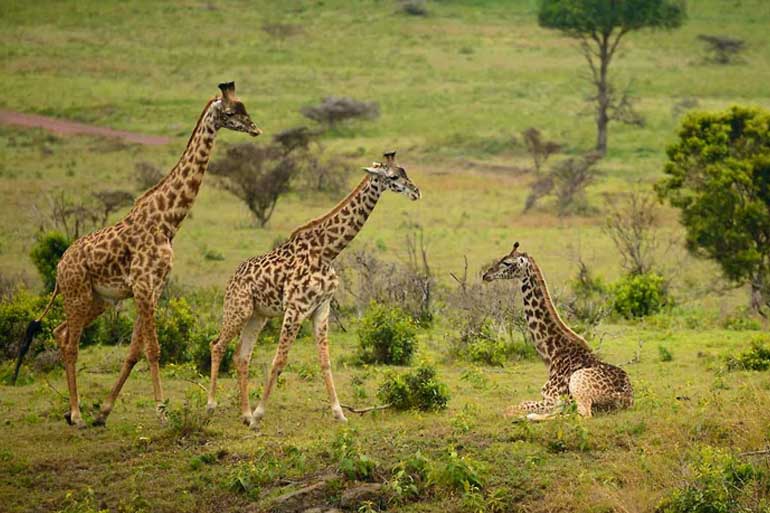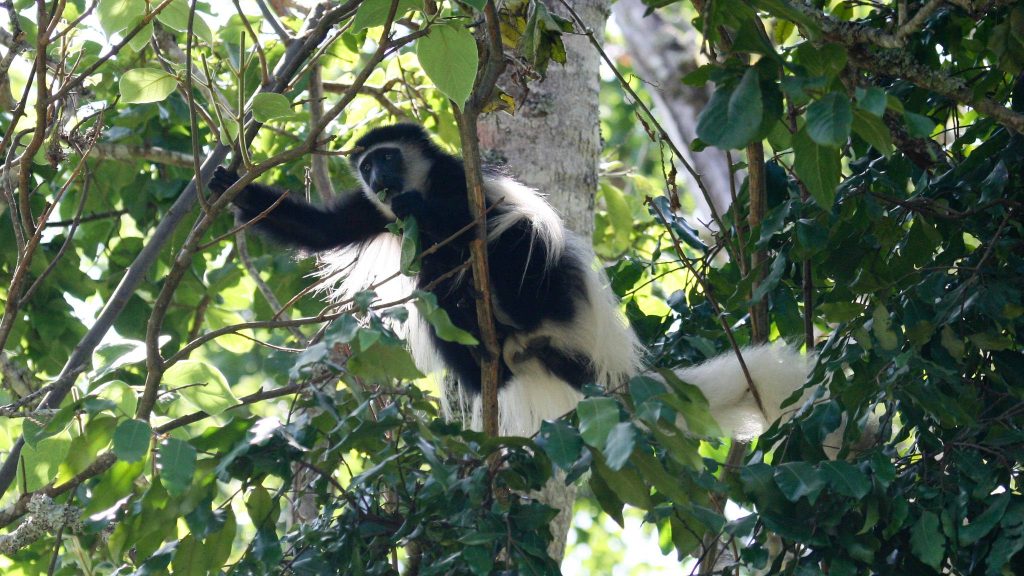Arusha National Park
What Makes The Arusha National Park So Special
Arusha National Park is a hidden gem located just a short drive from Arusha city and offers an incredible variety of landscapes and wildlife, making it one of the most unique parks in Tanzania. The park is set at the base of Mount Meru, Tanzania’s second-highest peak, which towers over the park’s lush forests and open grasslands. The combination of these diverse ecosystems, including the volcanic Ngurdoto Crater and the tranquil Momella Lakes, creates a landscape that is unlike any other. This diversity allows for a range of activities, from game drives to walking safaris, all set against breathtaking backdrops.
The park is known for its rich variety of wildlife, including giraffes, zebras, buffaloes, and a wide range of antelope species, as well as elephants, lions, and leopards, although the latter are more elusive. The Momella Lakes, located within the park, are particularly famous for attracting large numbers of flamingos, especially during the wet season, making it a great destination for birdwatching. Arusha National Park also boasts a variety of primates, including blue monkeys and colobus monkeys, which are often seen in the park’s dense forests, making it a paradise for nature enthusiasts.
One of the park’s highlights is the opportunity to embark on walking safaris, guided by experienced rangers who lead you through the diverse ecosystems. This offers a chance to connect with the environment on a deeper level, learning about the smaller details of nature, such as flora, animal tracks, and birdlife. Arusha National Park’s relatively small size, compared to other major parks in Tanzania, means it is less crowded, providing a more intimate and peaceful safari experience. With its stunning views, variety of wildlife, and unique activities, Arusha National Park is an ideal destination for travelers seeking adventure, tranquility, and natural beauty.
Top Arusha Safari Activities



Game Drives
Description: Explore the park’s diverse landscapes, from open grasslands to dense forests, on guided game drives. Spot animals like giraffes, zebras, buffaloes, and occasionally elephants, with the chance to see predators such as leopards.
Highlight: Frequent wildlife sightings in a tranquil, less-crowded environment.
Walking Safaris
Description: Take a guided walking safari to explore the park up close, learning about the flora, fauna, and ecology of the area. A ranger leads the tour, offering insights into the smaller details of nature, such as animal tracks and plants.
Highlight: A more immersive experience, allowing you to connect with the environment on foot.
Mount Meru Trekking
Description: Hike or trek Mount Meru, Tanzania’s second-highest peak. The trek offers stunning views of the surrounding landscape, including the nearby Ngorongoro Crater and Mount Kilimanjaro in the distance.
Highlight: A challenging trek for adventure seekers, with the chance to summit at 4,566 meters.
Birdwatching
Description: The park is home to over 400 bird species, including flamingos in the Momella Lakes and a variety of forest and grassland birds.
Highlight: Excellent for birdwatchers, especially during the wet season when migratory birds are present.
Canoeing on Momella Lakes
Description: Canoe on the peaceful Momella Lakes, where you can enjoy serene views and observe water birds and sometimes hippos from the water.
Highlight: A tranquil activity offering a different perspective of the park’s beauty and wildlife.
Ngurdoto Crater Exploration
Description: Visit the Ngurdoto Crater, a smaller volcanic caldera within the park, offering panoramic views of the crater floor and surrounding landscapes.
Highlight: A scenic and less-visited alternative to larger craters, providing unique views and wildlife sightings.
The best time to visit the Arusha depends on what you want to experience, as each season offers unique highlights
The best time to visit Arusha National Park is during the dry season (June to October) when wildlife viewing is at its best. During this period, animals gather around water sources, and the vegetation is less dense, making it easier to spot wildlife. The weather is also cool and pleasant, ideal for activities like walking safaris, game drives, and Mount Meru trekking.
However, the wet season (November to May) is excellent for birdwatching, as migratory birds arrive, and the landscape turns lush and green. Although there is occasional rainfall, wildlife is still present, and the park is less crowded, offering a peaceful experience. The clearest views of Mount Kilimanjaro and Mount Meru are often after the rains, especially from December to February.
Overall, June to October is best for safaris and trekking, while November to May is ideal for birdwatchers and those who enjoy lush scenery.

